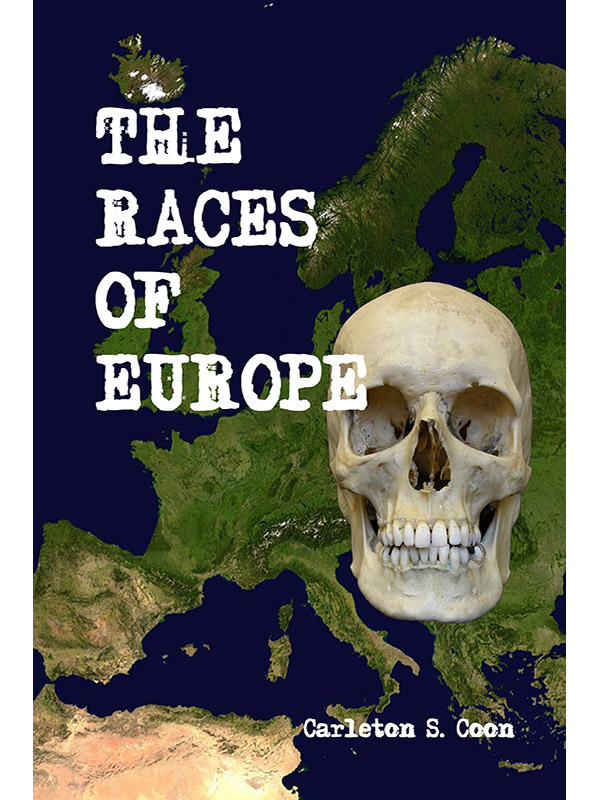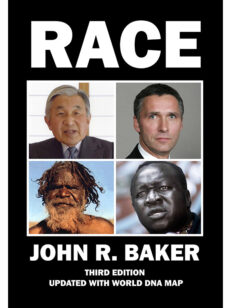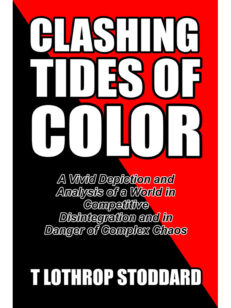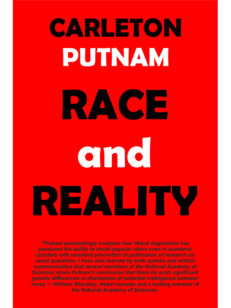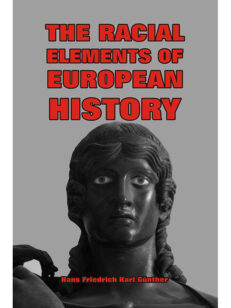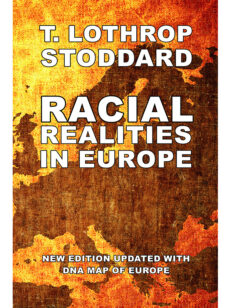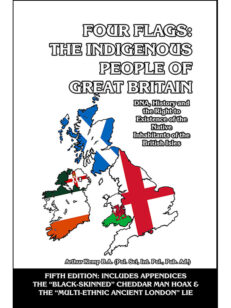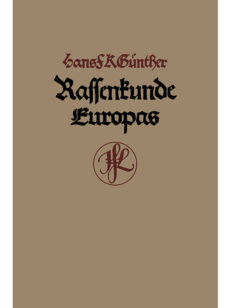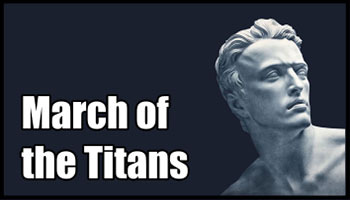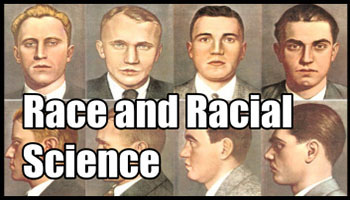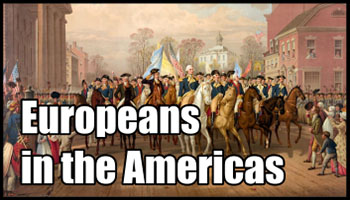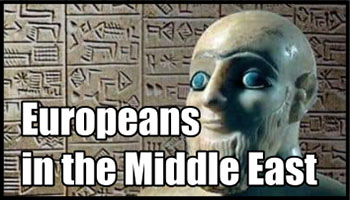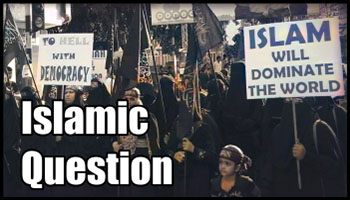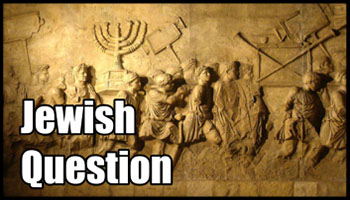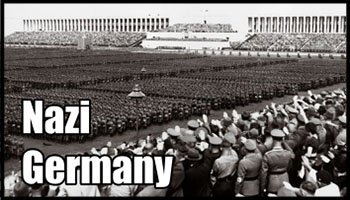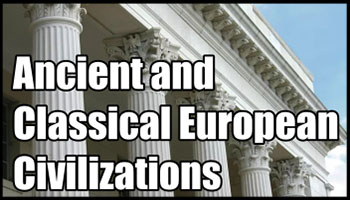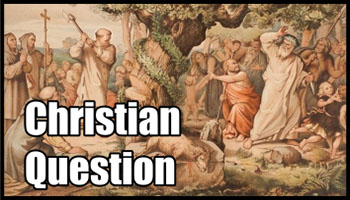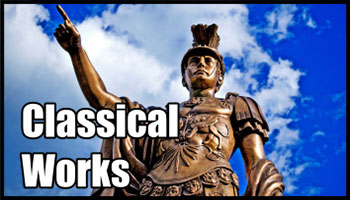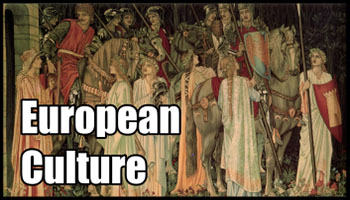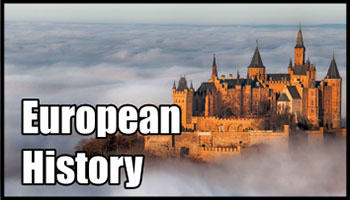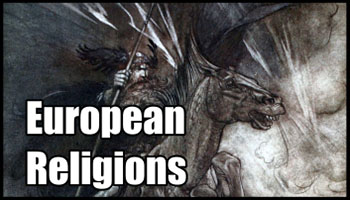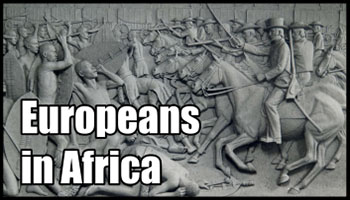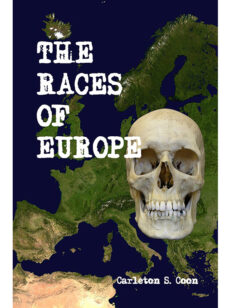Description
By Carleton S. Coon. One of the most important anthropological overviews of European racial types ever published.
Although some of its conclusions have since been eclipsed by DNA studies, this work remains a standard in racial typology.
Contains the full set of original photographic plates. Once a college standard, this book has been suppressed for 50 years.
A Harvard professor of anthropology, the author concluded that:
– The white race is of dual origin consisting of Upper Paleolithic (mixture of sapiens and neanderthals) types and Mediterranean (purely sapiens) types;
– The Upper Paleolithic peoples are the truly indigenous peoples of Europe;
– The Mediterraneans invaded Europe in large numbers during the Neolithic period;
– When reduced Upper Paleolithic survivors and Mediterraneans mix, a process of “dinarization” occurs which produces a hybrid with non-intermediate features, epitomized by the Dinaric race.
CONTENTS
Chapter I: Introduction to the Historical Study of the White Race
(1) Statement of Aims and Proposals (2) Theory and Principles of the Concept “Race” (3) Materials and Techniques of Osteology
Chapter II: Pleistocene White Men
(1) Introducing Homo Sapiens (2) Pleistocene Climate (3) Sapiens Men of the Middle Pleistocene (4) Non-Sapiens Pleistocene Fossil Men (5) The Neanderthaloid Hybrids of Palestine (6) Upper Palaeolithic Man in Europe, the Evidence as a Whole (7) Chronological and Geographical Differentiation of the European Aurignacian Group (8) Upper Palaeolithic Hunters of North Africa (9) Aurignacian Man in East Africa (10) The Magdalenians (11) Upper Palaeolithic Man in China (12) Summary and Conclusions
Chapter III: The Mesolithic Period
(1) The Historical Setting (2) Mesolithic Man in Africa (3) The Natufians of Palestine (4) The Midden-Dwellers of the Tagus (5) Mesolithic Man in France (6) The Ofnet Head Burials (7) Mesolithic Man in the Crimea (8) Palaeolithic Survivals in the Northwest (9) Summary and Conclusions
Chapter IV: The Neolithic Invasions (1) Introduction (2) The Neolithic and the Mediterranean Race (3) Iran and Iraq (4) Civilized Men in Egypt (5) Neolithic North Africa (6) The Neolithic in Spain and Portugal (7) The Eastern Source Areas: South, Central, and North (8) The Danubian Culture Bearers (9) The Corded or Battle-Axe People (10) The Neolithic in the British Isles (11) Western Europe and the Alpine Race (12) Neolithic Scandinavia (13) Neolithic Inhabitants of the Northern Forests (14) Conclusions
Chapter V: The Bronze Age
(1) Introduction (2) The Bronze Age in Western Asia (3) The Minoans (4) The Greeks (5) Copper and Bronze in the Western Mediterranean (6) Basques, Phoenicians, and Etruscans (7) The Copper Age in Europe North of the Mediterranean Lands: Danubian Movements and Bell Beakers (8) The Bronze Age in Britain (9) The Bronze Age in Central Europe (10) The Bronze Age in the North (11) The Bronze Age on the Eastern Plains (12) The Final Bronze Age and Cremation (13) Summary and Conclusions
Chapter VI: The Iron Age
(1) Race, Language, and European Peoples (2) The Illyrians (3) The Kelts (4) The Romans (5) The Scythians (6) The Germanic Peoples (7) The Slavs (8) Conclusions
Chapter VII: The Iron Age, Part II (Speakers of Uralic and Altaic)
(1) The Finno-Ugrians (2) The Turks and Mongols (3) Speakers of Uralic and Altaic, and Old World Racial Origins
Chapter VIII: Introduction to the Study of the Living
(1) Materials and Techniques (2) The Use of Statistics in Physical Anthropology (3) Distribution of Bodily Characters: (a) Stature and Bodily Form (4) Distribution of Bodily Characters: (b) Head Form, Head Size, and Other Metrical Characters of the Head and Face (5) Distribution of Bodily Characters: (c) Pigmentation, the Pilous System, and Morphology of the Soft Parts (6) Racial Classification within the White Family
Chapter IX: The North
(1) Introduction (2) The Lapps (3) The Samoyeds (4) Scandinavia; Norway (5) Iceland (6) Sweden (7) Denmark (8) The Finno-Ugrians, Introduction (9) Racial Characters of the Eastern Finns (10) The Baltic Finns: Livs and Esths (11) The Baltic Finns: Finland (12) The Baltic-Speaking Peoples (13) Conclusions
Chapter X: The British Isles
(1) Résumé of Skeletal History (2) Ireland (3) Great Britain, General Survey (4) The British Isles, Summary
Photographic Supplement
Chapter XI: The Mediterranean World
(1) Introduction (2) The Mediterranean Race in Arabia (3) Iraq and the Coastal Regions of the Persian Gulf (4) The Irano-Afghan Race; Iran and Afghanistan (5) The Turks as Mediterraneans (6) The Veddoid Periphery, Hadhramaut to Baluchistan (7) Palestine, Jewish Origins, and the Eastern Jews (8) The Mediterranean Race in East Africa (9) The Modern Egyptians (10) North Africa, Introduction (11) The Eastern Arabo-Berbers, Libya and the Oases (12) The Tuareg (13) Eastern Barbary, Algeria, and Tunisia (14) Western Barbary; Morocco and the Canary Islands (15) The Iberian Peninsula (16) The Western Mediterranean Islands (17) The Basques (18) The Gypsies (19) Conclusions
Chapter XII: The Central Zone, A Study in Reëmergence
(1) Introduction (2) France (3) Belgium (4) The Netherlands and Frisia (5) Germany (6) Switzerland and Austria (7) Italy (8) The Living Slavs: (a) Czechs and Wends (9) The Living Slavs: (b) Poland and Russia (10) Turks, Tatars and Mongols of European Russia (11) The Magyars (12) The Living Slavs: (c) Serbs, Croates and Slovenes (13) Albania and the Dinaric Race (14) The Greeks (15) Bulgaria (16) Rumania and the Vlachs (17) The Osmanli Turks (18) Near Eastern Brachycephals; Syria, Armenia and the Caucasus (19) Turkestan and the Tajiks (20) The brachycephalized Jews: Asia and Central Europe (21) Conclusions
Chapter XIII: Conclusion
(1) Comments and Reflections (2) The White Race and the New World
Appendices
I. Means of Principal Cranial Series used in Chapters II-VII
II. Glossary
III. List of Serials and Their Abbreviations
IV. List of Books
Index
436 pages. Paperback.

